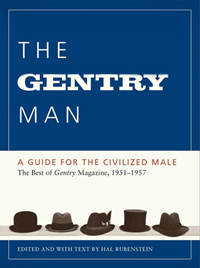For almost 80 years, Kirkus Reviews has served as the industry bible for bookstore buyers, librarians, and ordinary readers alike. Now Popdose joins the Kirkus Book Bloggers Network to explore the best — and sometimes the worst — in pop-culture and celebrity books.
This week, we’ll look at a style guide from long ago and discover some timeless truths…

If you want to understand a society in its own time and place, read its magazines. Not its novels, which will evoke an imagined past or extrapolate (successfully or not) an endpoint to then-contemporary trends; nor its newspapers, which, burdened by the self-knowledge of serving as the historical record, must by and large confine themselves to the facts as they are found on the ground, with no feeling for the poetry of events.
Magazines, with their assumed disposability, report from within the cultural currents of their day. They do not report on popular culture — they are popular culture. They are aspirational as well as informational; they show us how a society sees itself, both as it is and as it wishes to be. When I was a teenager, living in the sticks and poring religiously through out-of-date issues of The New Yorker, I was learning something about what it was like to actually live in Manhattan — but I was learning even more about the idea of living in Manhattan, and what it meant.
That’s the sort of magazine that Gentry was. While its publication history was relatively brief — as noted in the new best-of collection The Gentry Man: A Guide for the Civilized Male, selected and edited by Hal Rubenstein, the magazine was published quarterly from 1951 to 1957, just 22 issues — it came at a pivotal time for American society, and for the American man in particular.
The postwar boom was a time of new social mobility. The middle class expanded as new, well-paying jobs opened up in manufacturing and technology, and Americans found themselves with unprecedented levels of disposable income and leisure time — and with with a bewildering array of options for spending both.
Lacking a hereditary aristocracy on which to model itself, this newly affluent middle class sought new definitions for what it meant to life The Good Life. Under publisher William Segal, Gentry put forth an attractive vision, blending European elegance and New World meritocracy with a touch of Zen simplicity.
The Gentry Man dresses well, but not ostentatiously; his sartorial hero — profiled in one of a series of articles on great men of history — is Beau Brummel, who was celebrated less for the clothes he wore than for the way he wore them. You will never see him incapacitated by drink, but he can recommend a wine to complement any meal, and knows the perfect cocktail recipe for every occasion. His furnishings are impeccable, whether for his country estate or a two-room pied-Á -terre on the Upper West Side. He enjoys good food — preparing it as well as consuming it, wherever and however it might come his way. Gentry might publish an elaborate recipe for pressed duck as served at l’Escoffier, but it also ran features on getting the most out of one’s barbecue grill.
Comfortable and confident in all situations, the Gentry Man will vacation at Nassau, be it Long Island or the Bahamas, with equal aplomb — and be the best-dressed man in either place. He is a man of action, always ready for a ski trip or a sailing excursion. He knows the rules for a back-alley craps game, carries off a one-handed shuffle at poker, and can name three chess strategies to counter the Luzhin Defense. If the old fellow from the beer commercials had his own magazine, this would be it. Gentry was a how-to guide for being the Most Interesting Man in the World.
Read the rest of this article at Kirkus Reviews!





Comments